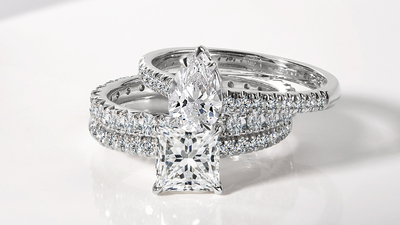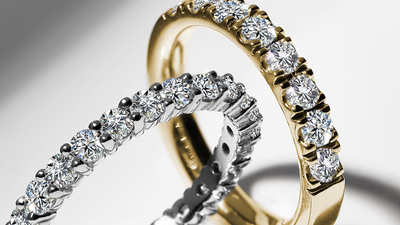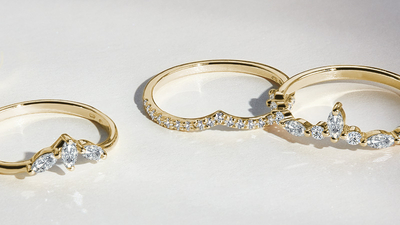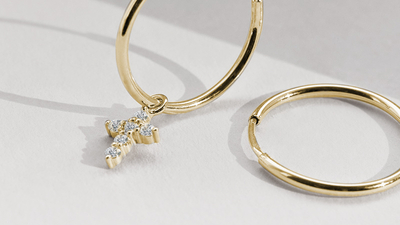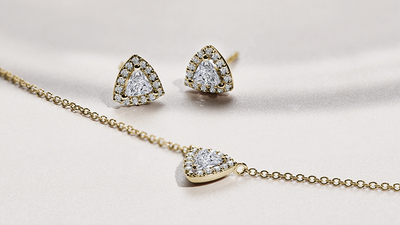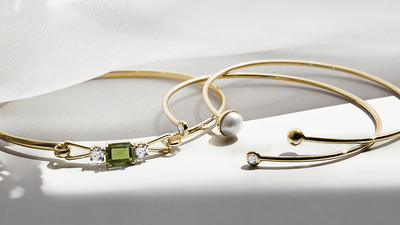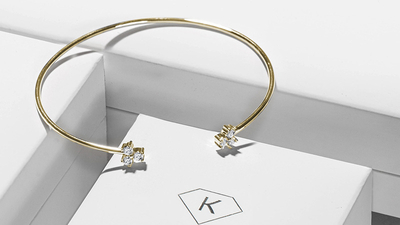The mineral olivine is also known as chrysolite or most commonly as peridot when it occurs in gemstone quality. It is characterised by an exceptionally clear yellow-green colour which resembles grass in the springtime. The name olivine points to its resemblance to the colour of the olive fruit and was first used by the mineralogist A. G. Werner in 1790. The name chrysolite comes from the Greek words for gold (chrysos) and stone (lithos) and it was French jewelers who came up with the name peridot. This word originates from the Arabic word faridat which means gemstone. In the past, peridots were called the “emeralds of the crusaders” since they were often mistaken for emeralds. Some historians believe that this was also possibly the case with Cleopatra's famous collection of emeralds, which may in fact have been a collection of peridots. The ancient Romans in turn mistakenly referred to the stone as topaz after the island of Topazos in the Red Sea where it was mined. In ancient times, the methods needed to accurately identify and distinguish between different types of stones were not yet available and so mistakes were common. This situation is also reflected in a French saying, which states “If you have two olivines, one of them is definitely something else”.
In ancient empires, the peridot was traditionally associated with light - the ancient Egyptians called it the “Gem of the Sun”. It was mined on the island of Topazios (today's Zabargad or St. John’s Island) and according to legend, the journey to reach the island was really only for the brave since the island was infested with snakes. But one enterprising pharaoh drove them into the sea and since then, nothing has prevented the mining of peridots there.
They were worn as amulets and when set in gold, they were said to have the power to protect their owner from night terrors. Some people also threaded them on donkey hair and then tied such 'bracelets' around their left arm to ward off evil spirits.
A stone with magical powers
From the point of view of astrology, peridots belong to the earth element and are ruled by the planet Venus. It is a stone which supports female energy. It belongs in the heart chakra and it is said to have the magical ability to attract money, love and luck. It apparently soothes nervousness, jealousy and anger and promotes peaceful and healthy sleep. It is also used as a protective amulet that reflects negative energy back to its source. It is said to help its wearer get rid of external influences and take responsibility for their own life. It removes old feelings of guilt and of clinging to the past and it also contributes to rapid spiritual growth and heals problematic relationships.
Peridot is an ideal stone for those who are born in August. It is also traditionally given on a 15th wedding anniversary. But it also has a positive effect on the signs of Sagittarius, Virgo, Taurus, Pisces, Leo and Cancer.
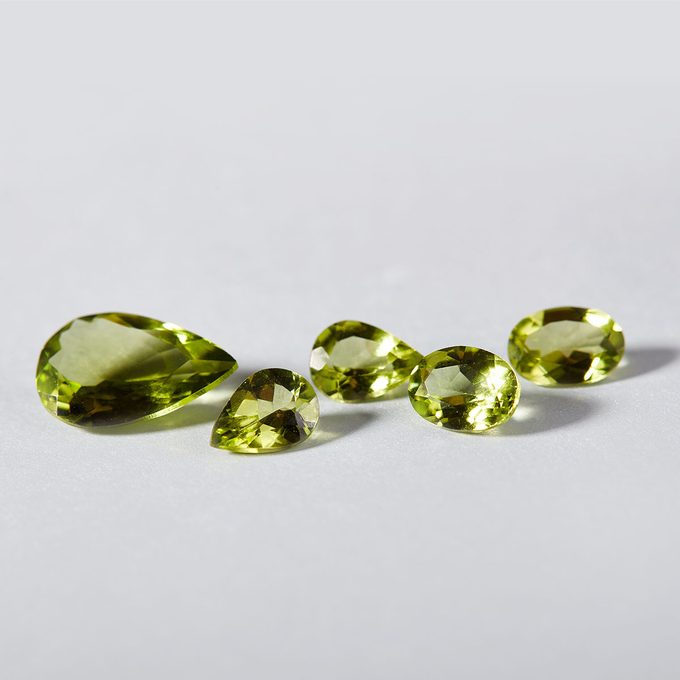
Peridot and Olivine in geology
Olivine, the more commonly found mineral form of peridot, is one of the leading minerals in the Earth's mantle. Its occurrence is therefore associated with igneous rock and it forms in tabular crystals in its cracks. Where the rock contains a high proportion of peridot, it’s called a peridotite.
In terms of chemical composition, olivine is a silicate with varying proportions of magnesium and iron. The amounts of these two elements in it depends on the conditions under which the mineral was formed. Its chemical composition is (Mg, Fe) 2SiO4. It falls somewhere in the middle of the isomorphic series of forsterite - fayalite, where the former (forsterite) contains no iron, while the latter, fayalite, is missing magnesium. These two minerals occur only very rarely in nature in their pure form and Olivine therefore contains both elements (iron and magnesium) in varying proportions. Olivines crystalise in the orthorhombic system and its crystals are most often euhedral. They are one of the first to crystalise in the magma and are therefore not limited by their surroundings. Olivines can also form irregular granular aggregates and at times also skeletal crystals. Sometimes olivines can also form prismatic twin crystals. Olivines range between 6.5 and 7 on the Mohs hardness scale. They have a vitreous luster, a conchoidal fracture and a white streak. They cleave poorly, so are relatively brittle.
The slightly green to yellowish colour of peridots is due to the inclusion of iron. If its content is higher, the stone may be brown coloured. It is sometimes stated that a perfect peridot should not contain more than 15% iron. The stone is characterised by translucency or transparency. It is dissolved in nitric acid and it does not normally melt with the application of a blowpipe. Stones with a high iron content are melted into a magnetic ball.
Peridots can occasionally contain inclusions and have special birefringence properties that distinguish them from glass. This feature is not very popular with gem cutters so they always try to suppress it as much as possible when cutting and polishing the stone. But if you look at a peridot which has been cut and polished with a magnifying glass, you will see its edges twice on the other side.
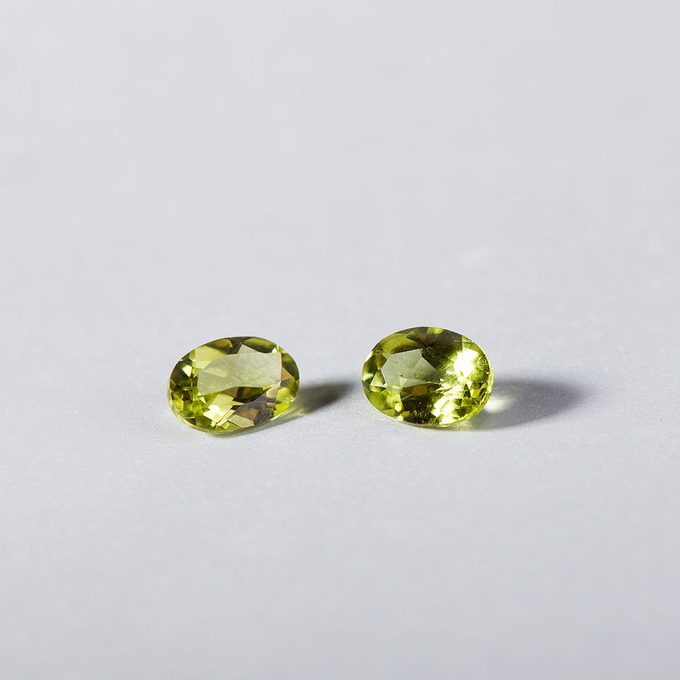
Peridots go against the fashion grain
The undeniable advantage of olivine is its fresh colour, which looks youthful and optimistic. Peridot jewellery is a welcome boost to an everyday, neutral wardrobe. At the same time, you can rely on it to draw attention to you. It will catch the eye at first sight and will draw attention to you with its radiance.
Peridots are cut into classic as well as modern shapes. They suit all the colours of gold. They complement yellow gold harmoniously, while white gold makes their colour stand out. At the KLENOTA jewellery studio, we also like the new combination with rose gold, which we adopted in an original jewellery set for our Violet summer collection. In traditional Czech jewellery, peridot is often placed alongside Czech garnets. In our collection, it keeps company with diamonds which enhance the overall elegance and sparkle of the jewellery. Examples are beautiful diamond and peridot earrings in the shape of a teardrop or a white gold ring with peridot and diamonds in a halo design.
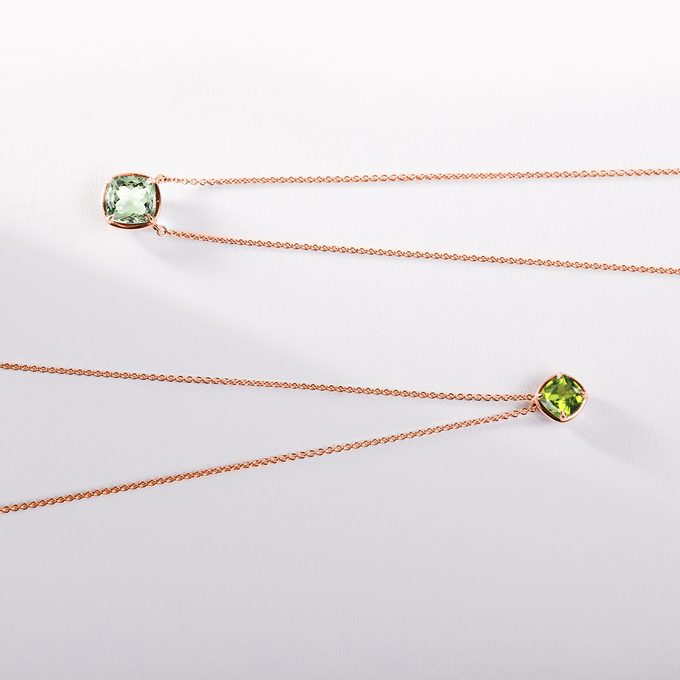
Peridot vs. emerald
Peridot together with the emerald are two of the most famous green gemstones so let’s compare them. Differences are evident in their colour shades. Peridots are lighter and have a warm golden tinge while the green in emeralds is cleaner and somewhat cooler in tone. Peridots also stand out over emeralds in the affordability category. In pieces under five carats in size, the price of peridots is quite attractive. It then increases sharply with an increase in weight because larger specimens of the gemstone are truly rare. Fans of natural stones will also be pleased to know that peridots do not undergo any modifications since they cannot be artificially improved.
How to take care of peridots and what to watch out for
Take extra care when handling this gemstone as it is more fragile than amethyst or citrine for instance. Due to its tendency to cleave (split), we do not recommend exposing it to bigger pressure. Clean it in hot water with soap or detergent added to it and remove any dirt with a soft brush. On the other hand, it is not suitable for steam cleaning or ultrasound.
Same as in ancient times, even today peridots can be easily confused with a lighter coloured emerald or another mineral. It is not exceptional to find that glass or some other synthetically produced stone, especially cubic zirconia, has been passed off as a peridot. We therefore recommend that you always buy precious stones and jewellery only from trusted retailers who will provide you with an international certificate of authenticity.
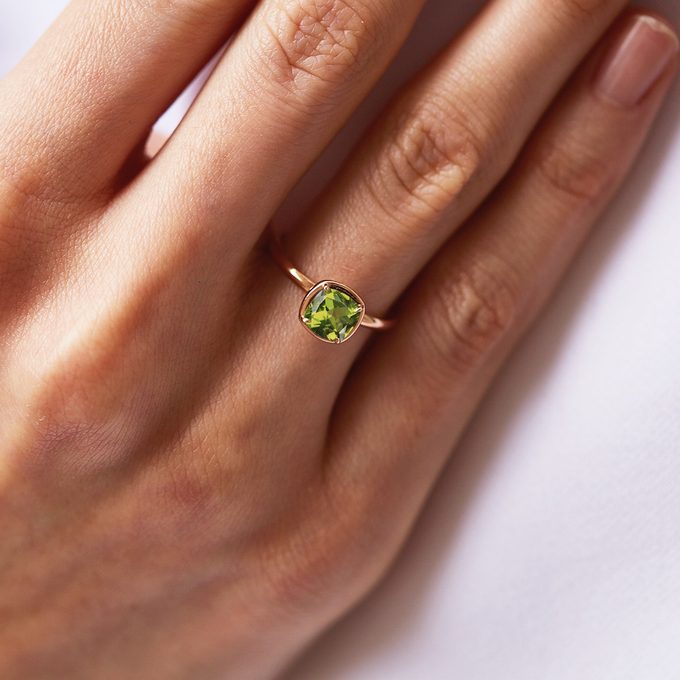
The volcanic origins of peridot
We don't need to venture too far to find peridots since there are also deposits of them in the Czech Republic. Around the area of Kozákov in Smrčí near Železný Brod, pieces of precious stone quality peridot have been found which can be cut into facets. Peridot deposits have also been found in the Central Bohemian Uplands and the Bohemian Paradise regions.
This stone is found in relative abundance around the world however it is not always of sufficient quality for jewellery use. Some of the best pieces come from the bottom of the Red Sea. The expansion of the oceanic crust caused the magma to spill, and once it solidified, this became a source of top quality peridot. On land, peridots always appear where the earth's crust has wrinkled (the mountains or ranges) or in places with volcanic activity (for example the Central Bohemian Uplands). From currently known deposits around the world, a highlight is Myanmar and its serpentinite deposits, which yield large peridot (around 10 ct). Small (up to 2ct) pieces are produced in the Apache territory of San Carlos in the USA. Other deposits are scattered, for example in China, Vietnam, Finland, Norway, Pakistan and New Zealand.
The largest peridot ever found was on the island of Zabargad (St. John’s Island), a place where the mining of peridot began in ancient times. It weighs almost 2.2 ounces (310 ct) and today it is in the collection of the Smithsonian Institute in Washington.
The most famous peridots can be considered to be the ones that adorn the Shrine of the Three Kings in Cologne, Germany, inside St. Peter's Cathedral. For many years however they were believed to be 200 carat emeralds.

A beauty that’s practically extraterrestrial
As the Opportunity rover roamed the landscape on Mars, it found and identified, among other things, this rare mineral. And the mineral is probably also contained in the mantle of the asteroid Vesta. So it is not a unique mineral in space as is evident from meteorites with pieces of olivines in them. Such coarsely grained stony-iron meteorites (chrysolites with an iron-nickel alloy matrix) are called pallasites in honor of their discoverer. In 1722, the Prussian zoologist and botanist Petr Pallas found the first meteorite that contained large grains of chrysolites in Siberia. They were so large that it was even possible to cut and polish some. The world has seen several more since then. The most beautiful ones come from North America. In 1885, a pallasite weighing over two pounds was found in Kansas. It was named Brenham Township. Another three similar meteorite finds followed this one in 1931. And the site of a surprising find with a total weight of about 150 lbs was around the city of Springwater in Canada. Olivine grains up to 1.4 inches in size were found in these meteorites.
Pallasites are very rare and make up only 1% of objects that have fallen to Earth. Not much is known about them yet, which gives rise to various theories. According to one of them, they were a part of asteroids that have then broken up into pieces.
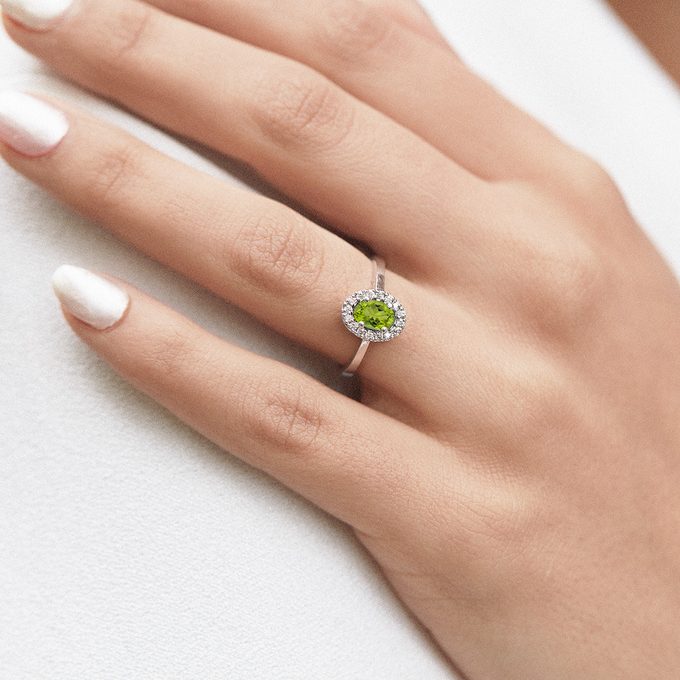
 Great Britain
Great Britain
